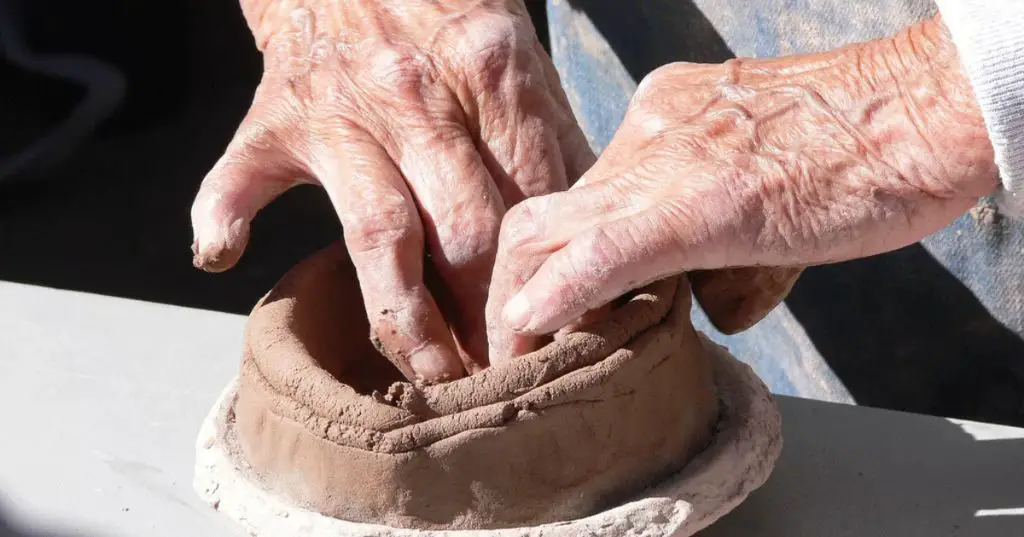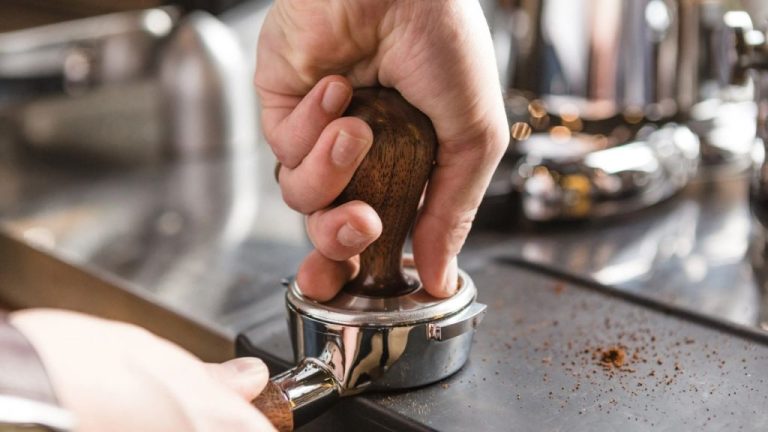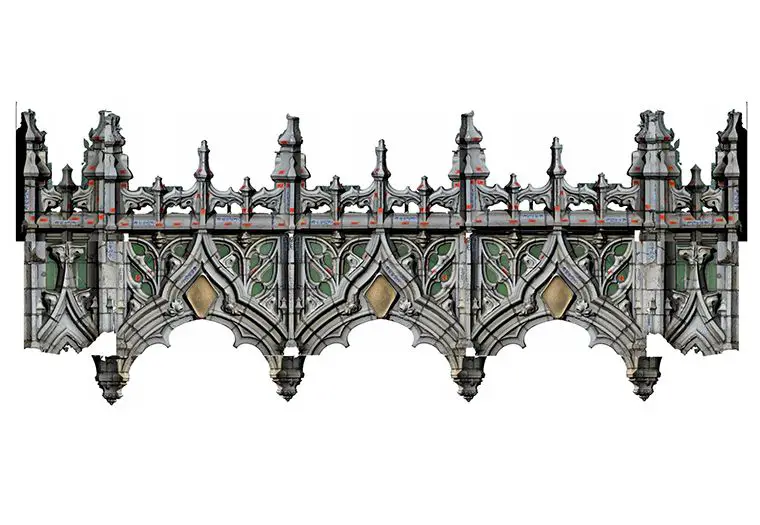Can You Use Clay After It Dries?
Working with clay that has dried out is a common situation for potters, sculptors, and crafters. When clay dries, it becomes hard and brittle, making it difficult or impossible to manipulate and work with. However, with some effort, dried clay can often be rehydrated and restored to a usable condition. This allows potters to reuse old clay scraps or unfinished projects, saving money and reducing waste. Rehydrating clay requires adding back moisture, which softens the clay and makes it malleable again. However, the properties of rehydrated clay can differ from fresh clay, so it’s important to understand how to properly recondition dried clay. This article provides an overview of the process of rehydrating clay, the effectiveness of rehydrating based on clay type and dryness level, proper storage of rehydrated clay, and considerations for when it may be better to simply use dried clay as-is.
What Happens When Clay Dries Out
When clay is wet, the water acts as a lubricant between the tiny clay particles, allowing them to slide over one another. As the water evaporates, the clay particles get closer together and the clay shrinks and hardens. The water molecules act like a glue, binding the clay particles tightly together through a force called surface tension. The more moisture clay loses, the firmer and more rigid it becomes.
According to sources, “What happens when clay dries out? How do art elements like texture and form tell a story about what I am making?” As clay dries, the texture becomes rough and the form often cracks or warps.
Rehydrating Dried Clay
The most common way to rehydrate dried clay is by soaking it in water. This allows the clay to absorb moisture and become malleable again. There are a few tips for effectively rehydrating clay by soaking:
- Use distilled water, as tap water may contain minerals that can alter the clay’s properties or chemistry (https://medacreations.wordpress.com/tag/precious-metal-clay/).
- Break up or grind dried clay into a powder first, so it can absorb water more easily.
- Add dried clay slowly to water, a bit at a time, stirring continuously to prevent clumping.
- Knead rehydrated clay well until it reaches a uniform consistency.
- Cover and allow clay to sit for several hours or overnight to fully rehydrate.
The advantage of soaking clay is that it’s a simple, low-effort process. However, rehydration through soaking alone can take time. The clay may also absorb water unevenly, with denser areas remaining dried out. Kneading while soaking helps improve moisture absorption.
Condition of Rehydrated Clay
The texture and workability of clay can change quite a bit after being rehydrated. Generally, clay becomes softer and more malleable when rehydrated, which makes it easier to shape and sculpt. However, the clay particles may not bind together as tightly, so the rehydrated clay can be a bit “crumbly” and delicate compared to fresh clay.
How much the texture changes depends on factors like the clay type, how thoroughly it was dried out, and how long it has been dried. Polymer-based clays like Sculpey tend to rehydrate well and regain a similar texture. Air-dry clays with lots of binders and fillers may end up quite soft and loose. The longer clay has been dried, the more the texture is altered during rehydration.
While rehydrated clay is workable, it’s usually best for simpler projects rather than very intricate sculpting. The altered texture means reconditioned clay works better for items like basic shapes, pots, and figurines rather than delicate floral arrangements or detailed jewelry. Gentle handling is needed to avoid tearing or distorting the softer clay.
When Rehydration Works Best
The success of rehydrating dried clay depends significantly on the clay type and how thoroughly dried it is. According to Clay Art Center[1], some clays rehydrate more readily than others. Porcelain and stoneware clays with higher clay content tend to rehydrate well if they have only air dried to a leather hard state. However, once these clays fully dry into a bone dry, rock hard state, rehydration becomes very difficult if not impossible.
Earthenware clays with higher organic content can rehydrate even when bone dry. However, the quality deteriorates with each rehydration cycle. For best results, aim to rehydrate earthenware clay in the leather hard state before it fully dries. Store rehydrated clay in an airtight container to maintain moisture.
Polymer and air dry clays are the most difficult to rehydrate once fully cured. Some specialized techniques may work to an extent, but the clay quality suffers. For best results, keep polymer and air dry clay moist during projects.
Storing Rehydrated Clay
If you plan to reuse rehydrated clay for future projects, it’s important to store it properly so it doesn’t dry out again. The best way to keep rehydrated clay moist is to wrap it tightly in plastic wrap or place it in a sealed plastic bag. Removing as much air as possible before sealing will help prevent the clay from drying out. Store the clay in the sealed bag or wrap in an airtight plastic container. Placing a damp sponge or towel in the container with the clay will also help maintain moisture levels. According to Seattle Pottery Supply, keeping clay in a dark, room-temperature space will help prolong its usable life. Check on the clay periodically and re-wrap or rewet it as needed to prevent drying out.

Using Dried Clay As-Is
If your clay has hardened to the point where rehydrating it is not possible, there are still creative ways you can use it in your art projects without adding water.
One option is to crush dried clay into a fine powder to make colored clay slip. Clay slip is used to join pieces of unfired clay together or fill cracks and holes. Simply add water to the powdered clay until it reaches a paint-like consistency.
You can also crush dried clay into small pieces to create a clay mosaic. Use tile adhesive to attach the clay shards to a base surface in a design. Clay mosaics make beautiful decorative accents for walls, tables, and more. The irregular shapes and colors of the crushed clay shards add great texture.
Powdered clay works well for making clay paints and dyes too. Add dry clay pigments to acrylic mediums or other paint bases to create custom clay-based paints.
Repurposing dried out clay by crushing it into a powder or small pieces lets you continue to use it for arts and crafts without having to fully rehydrate the clay.
Advantages of Working Dry
Working with clay in its dried state comes with some benefits. The main advantage is that cracking and drying issues are minimized when working with clay that has already dried out (1). When clay is moist and pliable, it shrinks and cracks as the water evaporates during the drying process. However, when the clay has already dried, the shrinking phase has completed so the clay remains stable as you sculpt and shape it. This allows more time for refinement without worrying about cracking distortion (2). Another benefit is accelerated project timelines, since there is no waiting for moist clay to fully dry and cure before painting, sealing, or using the finished piece (3). The flexibility and crack resistance lends itself well to more intricate sculptures and delicate detailing.
(1) https://www.arttoart.net/air-dry-clay-vs-polymer-clay/
(2) https://theartofeducation.edu/2019/02/the-pros-and-cons-of-working-with-air-dry-clay/
(3) https://www.faireandco.com/post/benefits-of-working-with-clay
Disadvantages of Dry Clay
One of the main disadvantages of working with clay in its dried state is brittleness. As clay loses moisture over time, it becomes more rigid and fragile. Dried clay is much more prone to cracking, chipping, and breaking compared to moist clay [1]. Even small stresses during sculpting or shaping can cause dried clay to fracture.
In addition to brittleness, dried clay has much less pliability and plasticity. This makes manipulating and molding the clay significantly more difficult. The clay holds its shape rigidly rather than being malleable. Features like folds, textures, and details are challenging to achieve with brittle dried clay compared to moist clay which retains its plasticity [2]. Therefore, the artist has much less freedom and flexibility when working with hardened clay.
Deciding When to Rehydrate
There are some factors to consider when deciding if you should rehydrate dried out clay:
If the clay is only leather-hard or slightly dried out, rehydrating can restore it to a workable state. According to Clay Art Center, clay that is not yet bone dry can be rehydrated with less water and a shorter time.
For bone dry clay, rehydration may still be successful but can take significantly more effort. The longer the clay has dried, the more challenging full rehydration becomes. If clay has dried for years, it may not be worth trying to rehydrate.
Consider if you need the clay to be fully workable and soft again. For some techniques like handbuilding, thoroughly rehydrated clay works best. But for other uses like mosaic tiles, the clay does not need to be completely softened.
Assess if you have time for the lengthy rehydration process. Soaking and kneading bone dry clay to make it workable again can take hours or days.
Decide if you want to avoid possible cracking or weak spots. Rehydrated clay can have a higher chance of flaws compared to freshly mixed clay.





